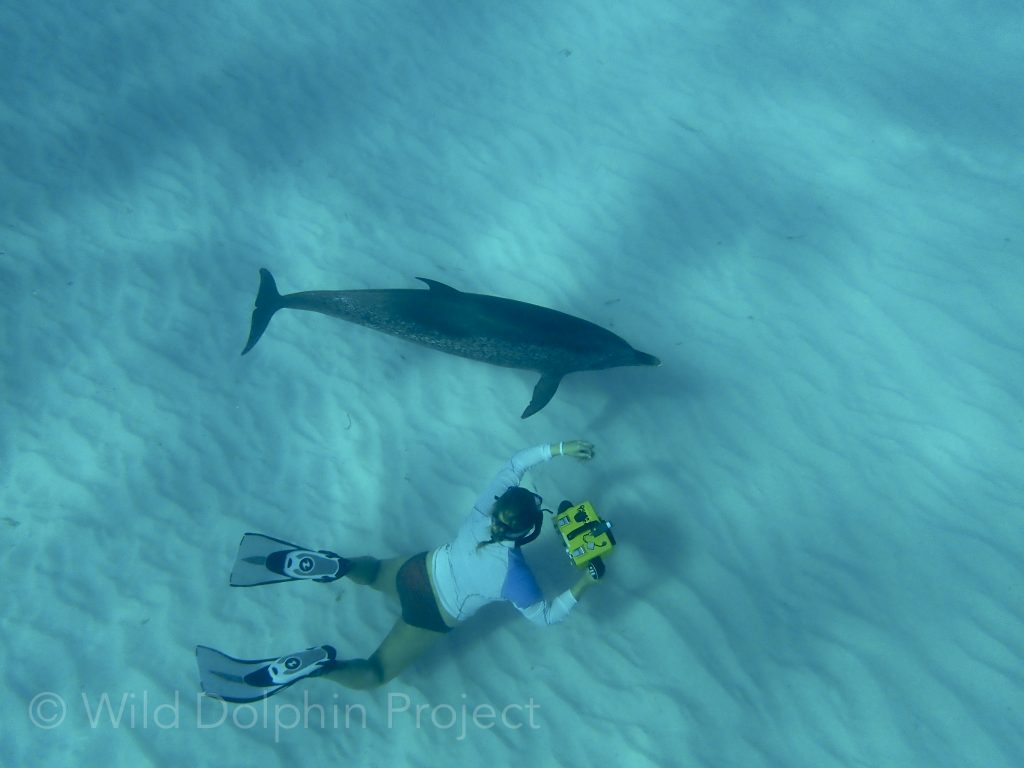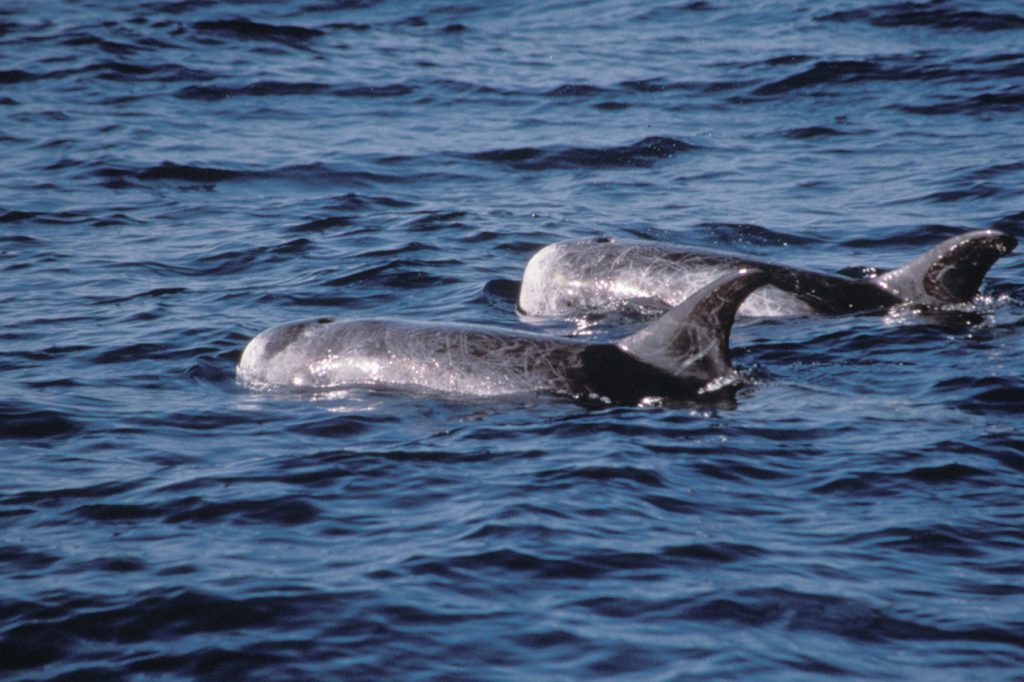Imagine always holding your breath — while running, talking, eating and sleeping. How long can you hold your breath? 30 seconds, 1 minute or 2? Well, some whales can hold their breath over an hour, necessary for a life in the sea.
Dolphins and whales, together known as cetaceans, are mammals, which means they hold air in their lungs, just like humans. They cannot breathe underwater like fish. They breathe through nostrils, called a blowhole, located on top of their heads — not their mouths (though it’s been shown they can if their blowhole is damaged, according to one study).
And how long can dolphins hold their breath? It’s one of the most common questions we get about cetaceans. The answer is — it depends on the species!
When a dolphin or whale surfaces to breathe they exhale first, then inhale. After they inhale, the powerful muscles around their blowhole seal it back up. If you are close by a marine mammal, you can often hear them before you see them!
Contrary to the images portrayed in lots of cartoons, marine mammals do not exhale water coming from their lungs. The visible spout of air is water sitting on top of its head around the blowhole being blown away before they inhale.

Researcher Cassie Volker dives down to collect data on an Atlantic spotted dolphin.
How long can whales and dolphins hold their breath?

A sperm whale WDP crew on a research expedition in the Bahamas. Photo by research assistant Cassie Volker.
The Cuvier’s beaked (Ziphius cavirostris) whale made the longest ever recorded dive, which lasted 222 minutes (three hours and 42 minutes) and broke the record for diving mammals.
“These guys blow our expectations,” said Nicola Quick Ph.D, a research scientist at the Duke Lab, specializing in animal behavior and acoustics, in a statement.
A sperm whales spend around 90 minutes hunting underwater before surfacing to breathe. In 1969, a male sperm whale was killed off the coast of South Africa after surfacing from a dive lasting 117 minutes.
Atlantic spotted dolphins can dive up to 200 feet and have been recorded holding their breath for up to ten minutes. Most of their dives are less than 30 feet and last for 2 to 6 minutes, according to NOAA. This is what we tend to observe in the Bahamas, where they surface every couple of minutes.
Bottlenose dolphins have similar abilities. Coastal bottlenose dolphins typically dive for 20-40 seconds, with maximum times around 10-15 minutes. The maximum breath hold duration registered for a tagged offshore bottlenose dolphin was 14 minutes in Bermuda in September 2016.
Risso’s dolphins, a deep water species, can up their breath up to about 30 minutes and dive at least 1,000 feet.

Risso’s dolphins taken by WDP crew during fieldwork.
Humpback whales can hold the breath up to an hour, but average around 4 to 7 minutes. Belugas also typically have dives under 10 minutes. Like bottlenose dolphins, orcas breathe every few minutes but have longer dives around 10 minutes too.
How Do Whales Hold Their Breath So Long?
Even the most impressive freedivers cannot compete with marine mammals. According to Outside magazine, the current non-oxygen aided records stand at 11 minutes, 35 seconds for men (Stéphane Mifsud, 2009) and 8 minutes, 23 seconds for women (Natalia Molchanova, 2011).
Whales have a few adaptations to make their breath-holding feats possible, including the mammalian diving reflex, which is the body’s physiological response to submersion in cold water.
- Marine mammals can take in more air with each breath, as their lungs are proportionately larger than those in humans, and with each breath they exchange more air.
- Their red blood cells carry more oxygen.
- Whales’ bodies are specially adapted to store oxygen in their blood and muscles. They have extraordinarily high levels of the oxygen-storing proteins hemoglobin and myoglobin.
- They reduce their heart rate and stop the blood flow to nonessential organs to conserve oxygen.
Read more:
https://www.scientificamerican.com/article/how-do-whales-and-dolphin/
https://www.nhm.ac.uk/discover/quick-questions/how-long-can-whales-hold-their-breath.html#:~:text=Other%20whales%20can%20also%20hold,a%20dive%20lasting%20117%20minutes.
References:
Dawson, S. M., Fordyce, R. E., Ridgway, S. H., Brough, T. E. and Slooten, E. (2016), Observations of a New Zealand dolphin (Cephalorhynchus hectori) breathing via its mouth. Mar Mam Sci. doi:10.1111/mms.12349
